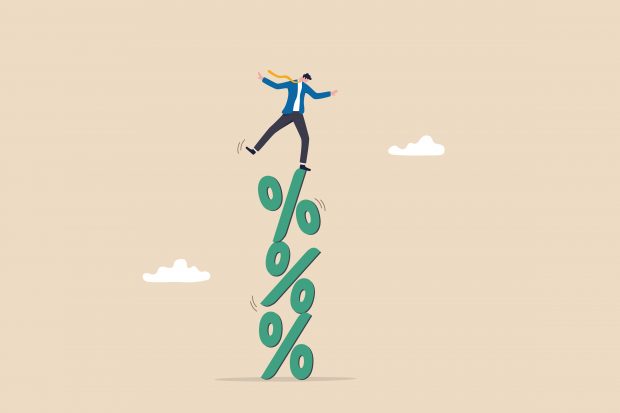 Credit/AdobeStock
Credit/AdobeStock
Weaker jobs gains and a rise in the unemployment rate will give the Fed more reason to pause its campaign of interest rate hikes, credit union trade economists said Friday.
The U.S. Bureau of Labor Statistics (BLS) reported Friday that non-farm employers added 187,000 jobs in August and the unemployment rate rose from 3.5% in July to 3.8% in August.
Recommended For You
The jobs gain was far below the average monthly gain of 271,000 over the prior 12 months. Also, the BLS lowered the jobs gains for the past two months to 105,000 for June (-80,000) and 157,000 for July (-30,000).
CUNA Chief Economist Mike Schenk said the report gives the Fed "some wiggle room to stand pat" on further rate increases. If trends hold, it would begin lowering rates in the second half of next year.
NAFCU Chief Economist Curt Long said the report showed continued cooling in the labor market.
"The increase in the unemployment rate is notable but not a major concern," Long said. "It primarily reflects a surge in labor force participation, with teenaged workers comprising an outsized share of that surge."
 Curt Long
Curt Long Average hourly earnings were $33.82 in August, up 4.3% from a year earlier and up 0.2% from July.
"Monthly wage growth fell to its lowest level in over a year, but average hours worked grew, suggesting that workers are not at risk of seeing rising layoffs any time soon," Long said. "Overall, this was a dovish report that supports a pause on rate hikes from the Federal Reserve."
Mike Fratantoni, chief economist for the Mortgage Bankers Association, said the 4.3% annual rate of wage growth is still higher than the Fed's 2% inflation target, but that it will probably be outweighed by the slowdown in the jobs market, with the average monthly gain over the past three months falling to about 150,000.
 Mike Fratantoni
Mike Fratantoni "This report should be enough for the Fed to keep the federal funds target rate on hold at its next meeting," Fratantoni said. "We expect that they will hold here until next spring, and their next move should be cut."
"The combination of a still strong job market, and rates that should trend down over time, is positive for the housing market," he said.
The Federal Open Market Committee (FOMC) raised the target for the Federal Funds Rate raised rates from near zero in March 2022 to a 5.00% to 5.25% range in May. It paused in June and then raised rates to 5.25% to 5.50% in July.
Fed Chair Jerome Powell said in a speech Aug. 25 that the FOMC at its Sept. 19-20 meeting will consider whether to "tighten further or, instead, to hold the policy rate constant and await further data."
The inflation measure that the Fed watches most closely rose slightly in July. On Thursday, the U.S. Bureau of Economic Analysis reported the price index for personal consumption expenditures (PCE) that excludes food and energy rose from 4.1% in June to 4.2% in July.
Over the past 20 years the core PCE inflation has ranged from 0.6% in July 2009 as the nation was emerging from the Great Recession to 5.4% in February and March 2022. It stood at 1.8% in July 2019 before the pandemic.
Also, the economy is not growing as fast as previously thought. On Wednesday BEA lowered its estimate for growth in gross domestic product. Its second estimate was that annualized growth from the first quarter to the second quarter was 2.1%, down from its initial estimate of 2.4%. First-quarter growth was 2.0%.
Schenk said he wasn't surprised by the uptick in PCE inflation. Schenk said Fed rate hikes can take up to 12 months for their effects to work their way through the economy.
 Mike Schenk
Mike Schenk CUNA said it expects the economy to continue to slow over the next several months, and the Fed to hold at its current rate before starting to cut rates sometime in the second half of next year.
The economy will avoid recession, and although unemployment rates will rise, they will peak around 4.5% — far lower than during recent recessions.
Credit union returns on assets will shrink, but will also avoid the lows of the past recession, Schenk said. "This is by no means a crisis."
© 2025 ALM Global, LLC, All Rights Reserved. Request academic re-use from www.copyright.com. All other uses, submit a request to [email protected]. For more information visit Asset & Logo Licensing.








